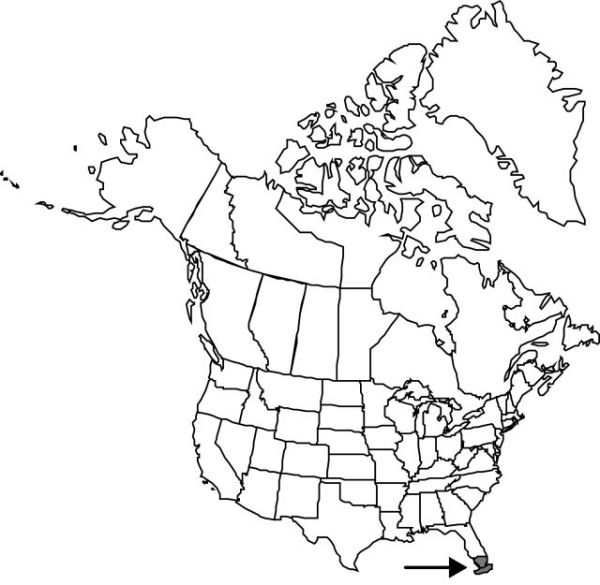Vanilla mexicana
Gard. Dict. ed. 8, Vanilla no. 1. 1768.
Roots usually 1 per node, aerial portions 1–2 mm diam. Stems occasionally branched, leafy, very slender, 2–3 mm diam., smooth. Leaves persistent; blade flat, elliptic to broadly ovate, longer than internodes, to 25 × 12 cm, leathery, apex acuminate; distal leaves smaller, proportionately narrower. Inflorescences axillary, several-flowered racemes, short-pedunculate, to 17 cm excluding peduncle; floral bracts foliaceous, ovate-elliptic, to 2.5 × 1.5 cm. Flowers: sepals and petals spreading, green, thick, rigid; sepals oblong-lanceolate to lanceolate-elliptic, to 6.5 × 2 cm, margins undulate, apex reflexed, acute; petals similar, abaxially keeled, slightly smaller; lip basally adnate to column for 5 mm, white with yellow crest, cuneate, to 5 × 3 cm when spread, distally 3-lobed, lateral lobes arching over column, rounded, margins involute, middle lobe broadly 3-angular, margins undulate, apex obtuse to rounded; disc with thick longitudinal crest, becoming 3-keeled toward apex, 5 mm wide, glabrous; column white, slender, 20–25 mm; pollinia yellow; pedicellate ovary to 5 cm. Berries cylindric, slender, to 27 cm.
Phenology: Flowering May–Jun.
Habitat: Cypress swamps, hammocks
Elevation: 0–20 m
Distribution

Fla., Mexico, West Indies, Central America (Guatemala), Central America (Nicaragua), South America
Discussion
Considerable confusion has swirled around the identity of Vanilla mexicana, including the notion that the epithet refers to the commercial vanilla, V. planifolia. Lectotypification of the Linnaean basionym, Epidendrum vanilla, has settled the matter (S. Cafferty and C. E. Jarvis 1999).
Selected References
None.
Lower Taxa
"thick" is not a number.